Unveiling chemotherapy-induced immune landscape remodeling and metabolic reprogramming in lung adenocarcinoma by scRNA-sequencing
- PMID: 39729352
- PMCID: PMC11677239
- DOI: 10.7554/eLife.95988
Unveiling chemotherapy-induced immune landscape remodeling and metabolic reprogramming in lung adenocarcinoma by scRNA-sequencing
Abstract
Chemotherapy is widely used to treat lung adenocarcinoma (LUAD) patients comprehensively. Considering the limitations of chemotherapy due to drug resistance and other issues, it is crucial to explore the impact of chemotherapy and immunotherapy on these aspects. In this study, tumor samples from nine LUAD patients, of which four only received surgery and five received neoadjuvant chemotherapy, were subjected to scRNA-seq analysis. In vitro and in vivo assays, including flow cytometry, immunofluorescence, Seahorse assay, and tumor xenograft models, were carried out to validate our findings. A total of 83,622 cells were enrolled for subsequent analyses. The composition of cell types exhibited high heterogeneity across different groups. Functional enrichment analysis revealed that chemotherapy drove significant metabolic reprogramming in tumor cells and macrophages. We identified two subtypes of macrophages: Anti-mac cells (CD45+CD11b+CD86+) and Pro-mac cells (CD45+CD11b+ARG +) and sorted them by flow cytometry. The proportion of Pro-mac cells in LUAD tissues increased significantly after neoadjuvant chemotherapy. Pro-mac cells promote tumor growth and angiogenesis and also suppress tumor immunity. Moreover, by analyzing the remodeling of T and B cells induced by neoadjuvant therapy, we noted that chemotherapy ignited a relatively more robust immune cytotoxic response toward tumor cells. Our study demonstrates that chemotherapy induces metabolic reprogramming within the tumor microenvironment of LUAD, particularly affecting the function and composition of immune cells such as macrophages and T cells. We believe our findings will offer insight into the mechanisms of drug resistance and provide novel therapeutic targets for LUAD in the future.
Keywords: lung adenocarcinoma; cancer biology; human; metabolic reprogramming; neoadjuvant chemotherapy; phenotype atlas.
© 2024, Huang, Wu, Bi et al.
Conflict of interest statement
YH, GW, GB, LC, JL, ML, HZ, GS, ZH, ZC, ZL, WJ, QW, JX, SY, CZ No competing interests declared
Figures
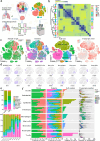

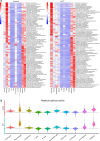
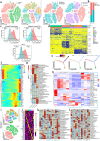
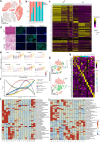
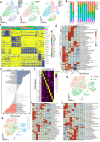
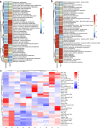
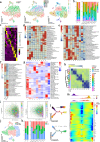
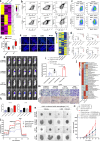


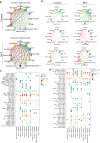

Update of
- doi: 10.1101/2024.02.18.580893
- doi: 10.7554/eLife.95988.1
- doi: 10.7554/eLife.95988.2
Similar articles
-
Macrophage heterogeneity and oncogenic mechanisms in lung adenocarcinoma: insights from scRNA-seq analysis and predictive modeling.Front Immunol. 2025 Jan 9;15:1491872. doi: 10.3389/fimmu.2024.1491872. eCollection 2024. Front Immunol. 2025. PMID: 39850883 Free PMC article.
-
Single-cell RNA sequencing reveals immune microenvironment niche transitions during the invasive and metastatic processes of ground-glass nodules and part-solid nodules in lung adenocarcinoma.Mol Cancer. 2024 Nov 23;23(1):263. doi: 10.1186/s12943-024-02177-7. Mol Cancer. 2024. PMID: 39580469 Free PMC article.
-
The impact of POSTN on tumor cell behavior and the tumor microenvironment in lung adenocarcinoma.Int Immunopharmacol. 2025 Jan 3;145:113713. doi: 10.1016/j.intimp.2024.113713. Epub 2024 Dec 13. Int Immunopharmacol. 2025. PMID: 39672019
-
Landscape and dynamics of single tumor and immune cells in early and advanced-stage lung adenocarcinoma.Clin Transl Med. 2021 Mar;11(3):e350. doi: 10.1002/ctm2.350. Clin Transl Med. 2021. PMID: 33783985 Free PMC article.
-
Exploring ribosome biogenesis in lung adenocarcinoma to advance prognostic methods and immunotherapy strategies.J Transl Med. 2025 May 2;23(1):503. doi: 10.1186/s12967-025-06489-0. J Transl Med. 2025. PMID: 40316986 Free PMC article.
Cited by
-
Unraveling the complexities of diet induced obesity and glucolipid dysfunction in metabolic syndrome.Diabetol Metab Syndr. 2025 Jul 22;17(1):292. doi: 10.1186/s13098-025-01837-y. Diabetol Metab Syndr. 2025. PMID: 40696355 Free PMC article. Review.
-
Exosomes Extracted from Human Umbilical Cord MSCs Contribute to Osteoarthritic Cartilage and Chondrocytes Repair Through Enhancing Autophagy While Suppressing the Wnt/β-Catenin Pathway.Tissue Eng Regen Med. 2025 Jul;22(5):719-733. doi: 10.1007/s13770-025-00716-x. Epub 2025 Apr 15. Tissue Eng Regen Med. 2025. PMID: 40232653
-
Treatment of Advanced NSCLC Patients with an Anti-Idiotypic NeuGcGM3-Based Vaccine: Immune Correlates in Long-Term Survivors.Biomedicines. 2025 May 6;13(5):1122. doi: 10.3390/biomedicines13051122. Biomedicines. 2025. PMID: 40426949 Free PMC article.
References
-
- Anand P, Guillaumet-Adkins A, Dimitrova V, Yun H, Drier Y, Sotudeh N, Rogers A, Ouseph MM, Nair M, Potdar S, Isenhart R, Kloeber JA, Vijaykumar T, Niu L, Vincent T, Guo G, Frede J, Harris MH, Place AE, Silverman LB, Teachey DT, Lane AA, DeAngelo DJ, Aster JC, Bernstein BE, Lohr JG, Knoechel B. Single-cell RNA-seq reveals developmental plasticity with coexisting oncogenic states and immune evasion programs in ETP-ALL. Blood. 2021;137:2463–2480. doi: 10.1182/blood.2019004547. - DOI - PMC - PubMed
-
- Aran D, Looney AP, Liu L, Wu E, Fong V, Hsu A, Chak S, Naikawadi RP, Wolters PJ, Abate AR, Butte AJ, Bhattacharya M. Reference-based analysis of lung single-cell sequencing reveals a transitional profibrotic macrophage. Nature Immunology. 2019;20:163–172. doi: 10.1038/s41590-018-0276-y. - DOI - PMC - PubMed
-
- Bernhagen J, Krohn R, Lue H, Gregory JL, Zernecke A, Koenen RR, Dewor M, Georgiev I, Schober A, Leng L, Kooistra T, Fingerle-Rowson G, Ghezzi P, Kleemann R, McColl SR, Bucala R, Hickey MJ, Weber C. MIF is a noncognate ligand of CXC chemokine receptors in inflammatory and atherogenic cell recruitment. Nature Medicine. 2007;13:587–596. doi: 10.1038/nm1567. - DOI - PubMed
-
- Bondarenko M, Le Grand M, Shaked Y, Raviv Z, Chapuisat G, Carrère C, Montero MP, Rossi M, Pasquier E, Carré M, André N. Metronomic chemotherapy modulates clonal interactions to prevent drug resistance in non-small cell lung cancer. Cancers. 2021;13:2239. doi: 10.3390/cancers13092239. - DOI - PMC - PubMed
MeSH terms
Substances
Grants and funding
LinkOut - more resources
Full Text Sources
Medical
Research Materials
Miscellaneous

